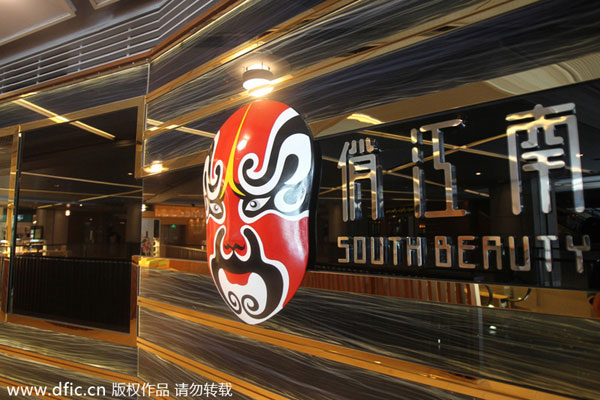 |
|
A South Beauty restaurant in Shanghai, China, July 8, 2013. [Photo/IC] |
High-end restaurant chain South Beauty is looking to expand into second-and third-tier cities to lift sales that have been flagging due to the government's ongoing austerity campaign.
Earlier this month, South Beauty set up a store in Kunming of Yunnan province to spearhead its efforts to shift from its luxury catering-driven business model. South Beauty has 74 stores in China, with about 50 percent of them located outside the top-tier cities.
Last April, CVC Capital Partners Sicav-FIS SA completed its investment and became the majority shareholder in South Beauty Investment Co Ltd, which owns and operates the restaurants.
An industry insider said the rentals for a restaurant in second-and third-tier cities is 20 to 30 percent lower than that in the first-tier cities, thereby lowering the pressure in terms of cost.
Wu Jinge, media supervisor of public relations at South Beauty Beijing Enterprise Management Co Ltd, said the chain plans to open more stores in second-and third-tier cities to offset losses due to the frugality campaigns.
She said the catering market in the top-tier cites is saturating, but demand from the lower-tier market is growing rapidly.
Many restaurants are shifting from large cities and expensive menus to smaller cities and medium-priced dishes, a trend which is more visible during festival seasons.
Zhu Danpeng, an industry researcher, said the traditional Lunar New Year's Eve dinner for the upcoming Spring Festival is being offered at much lower prices than before and with more food varieties.
He said though most of the chains have launched high-end menus to maintain profits, it is medium-priced menus that are expected to gather more traffic for the restaurants.
Though the catering industry has seen some signs of recovery after struggling for most of the government's austerity campaign, it still needs more innovation in services, the China Cuisine Association said in its annual report last year.
During the first 10 months of 2014, revenue was up 9.7 percent to 2.26 trillion yuan ($368 billion), which the CCA said was "a slight increase" from the comparable period's growth rate.
